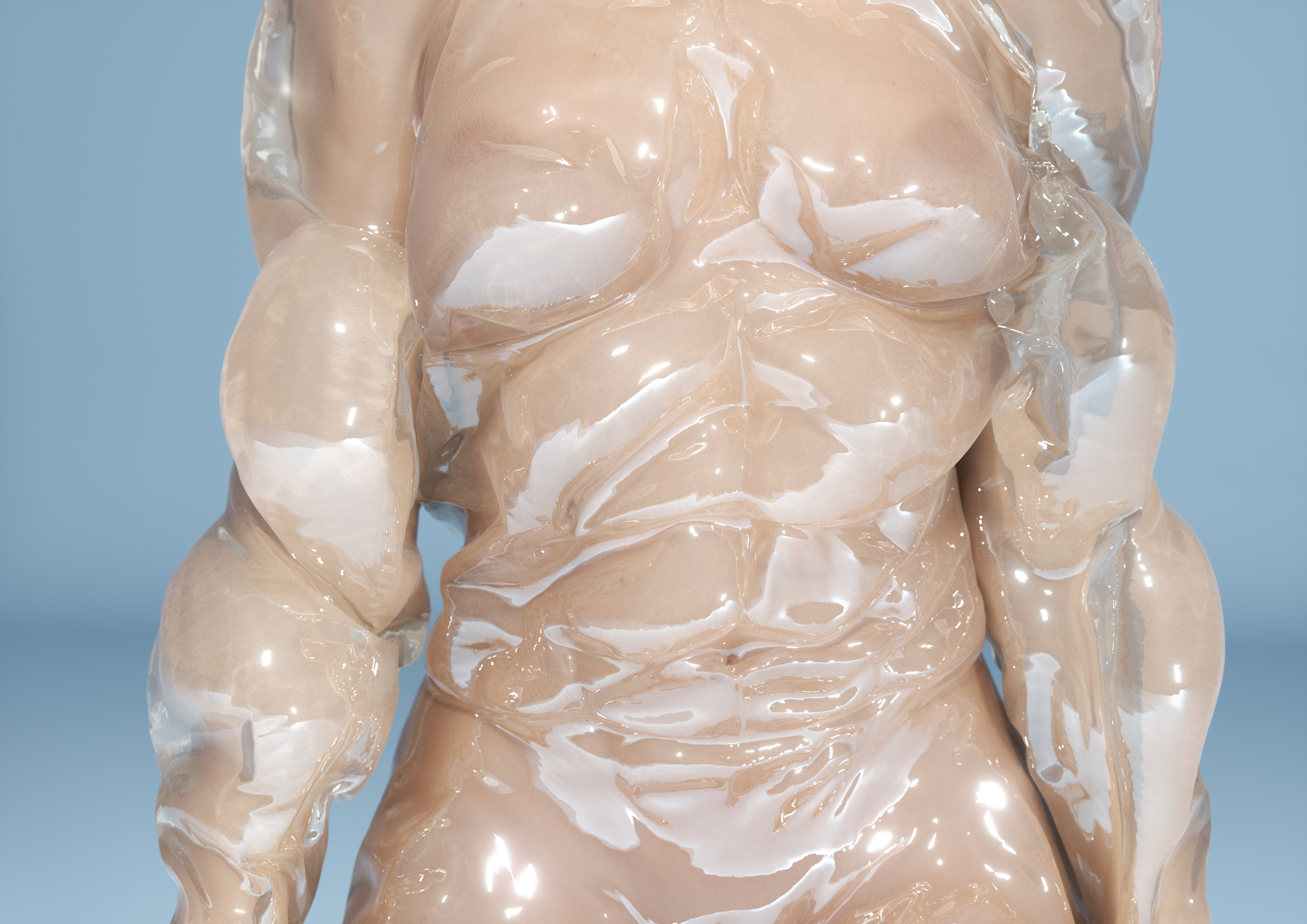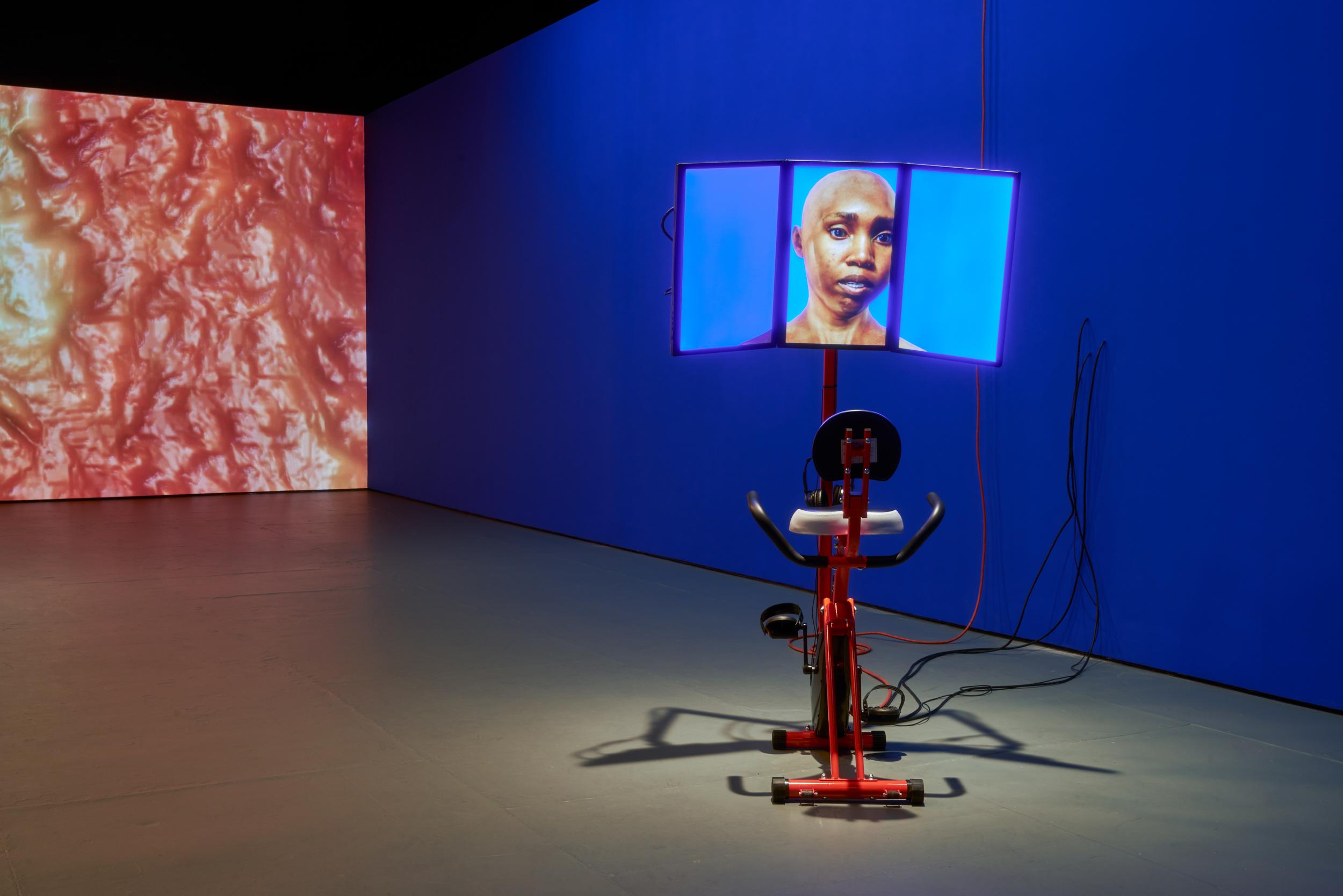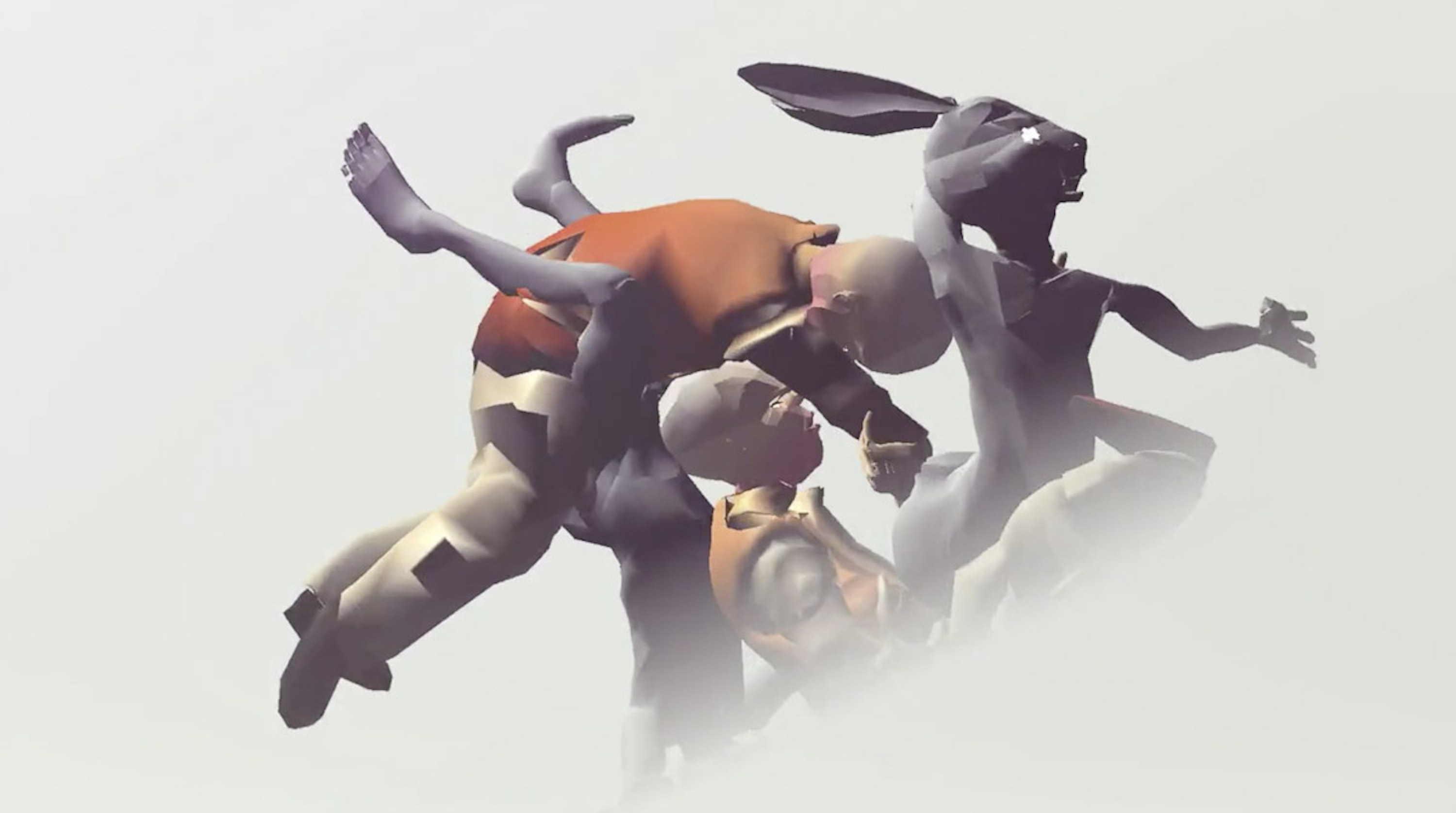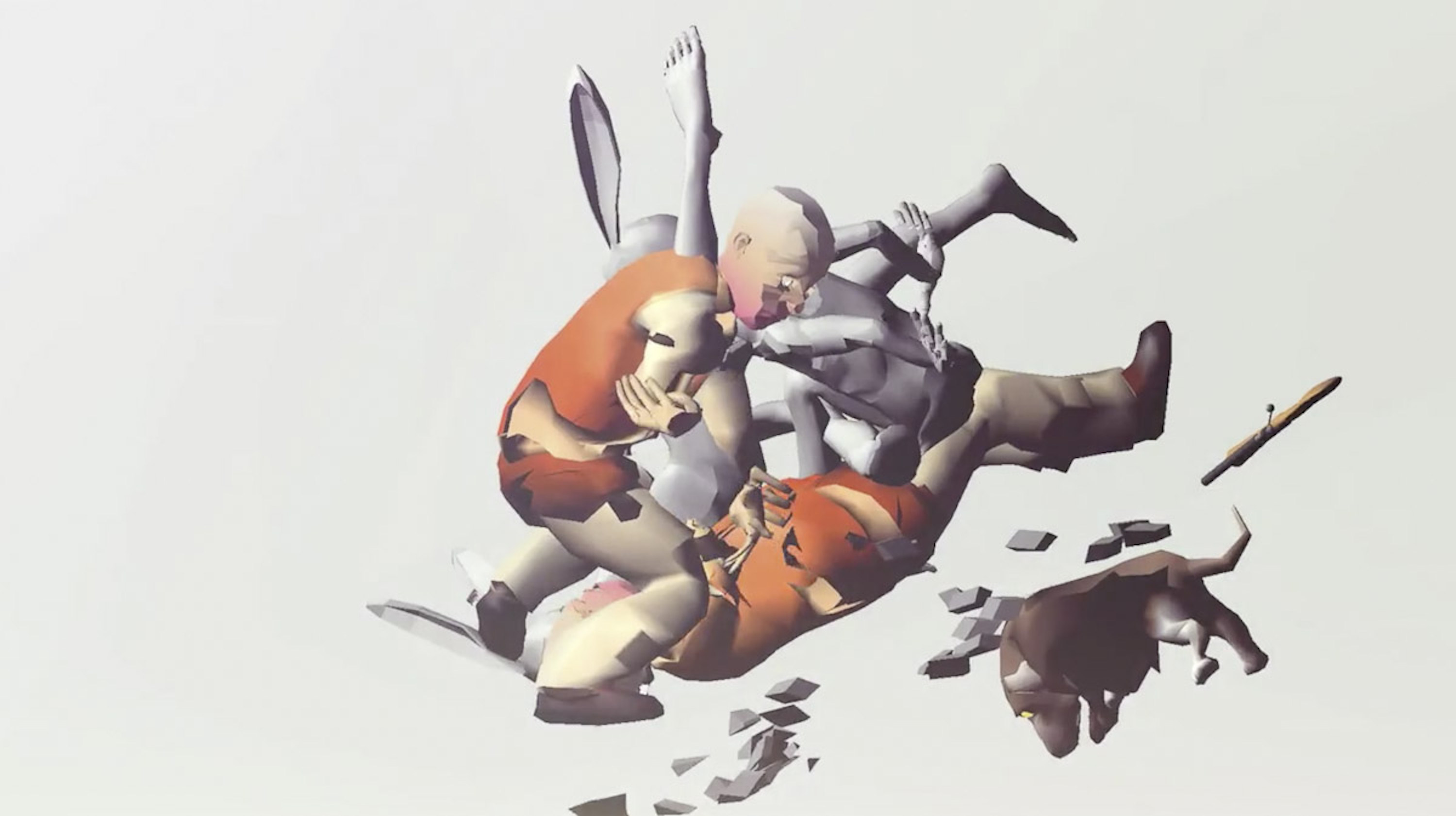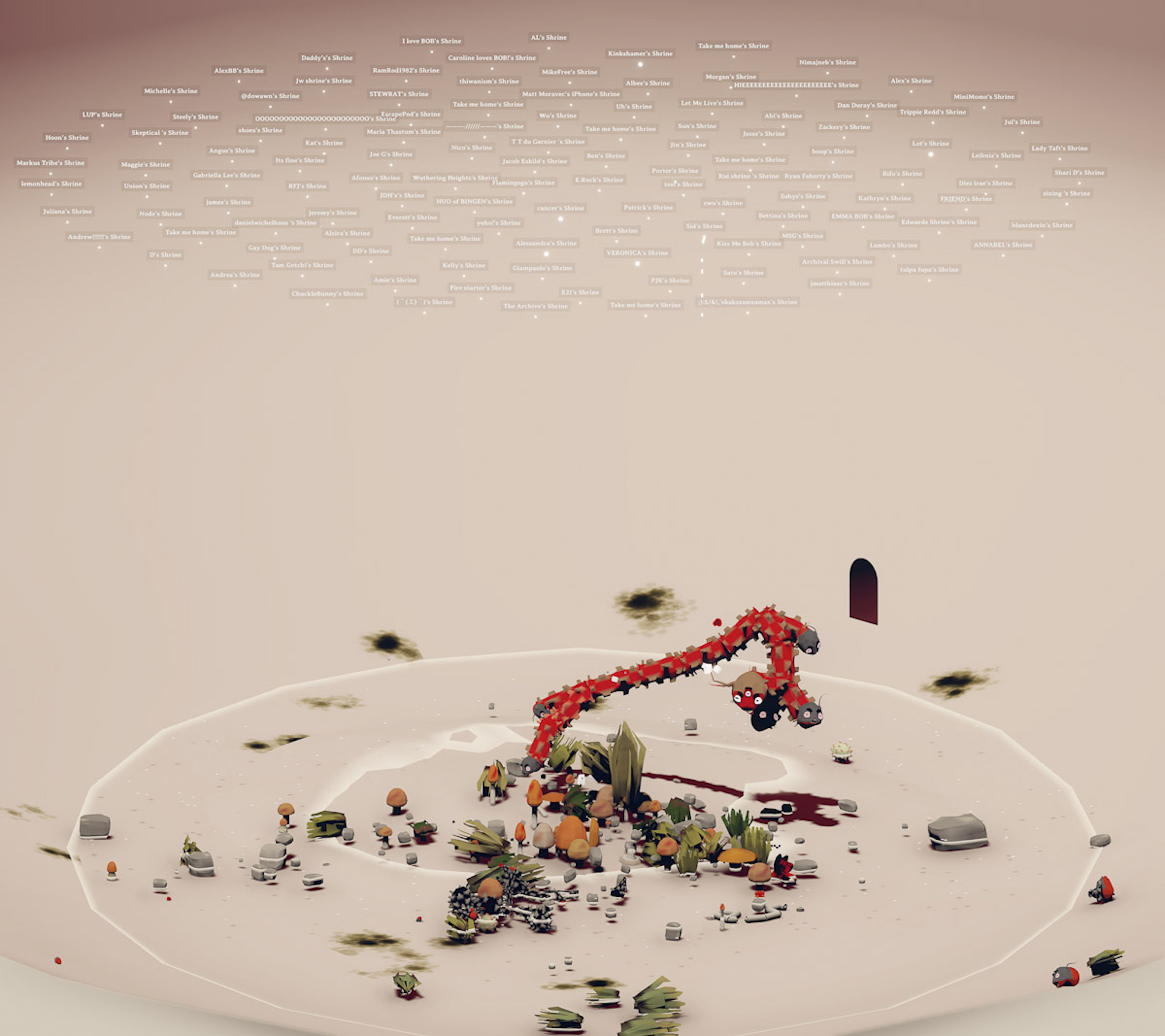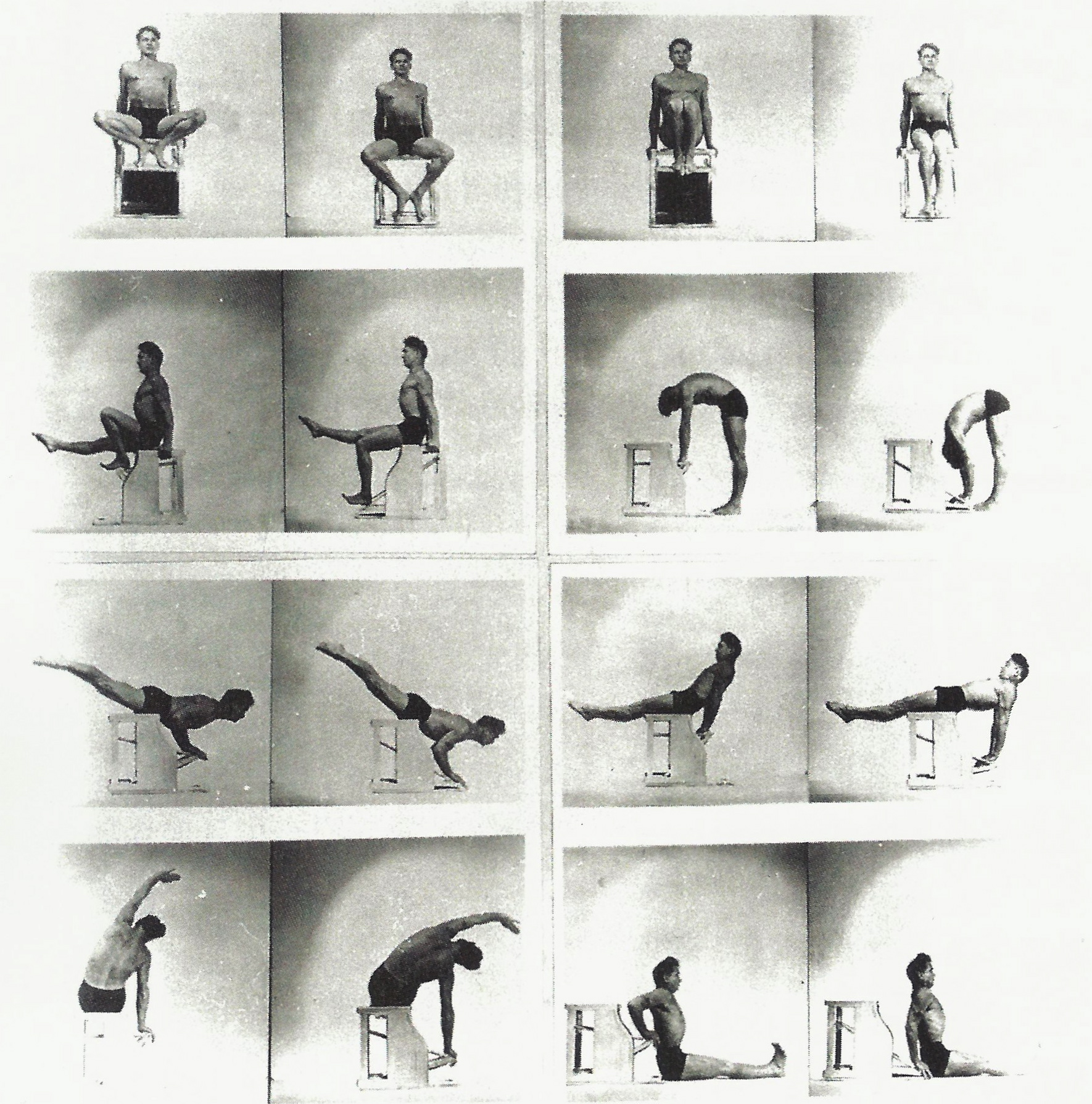Anxiety over contamination, contagion, and infiltration manifests in contemporary art as a genre of digital animations depicting uncannily corporeal human figures. A trio of videos by Kate Cooper—recently displayed in the New Museum, New York, as part of its “Screens Series” program—subjects a female-presenting character to a series of skin-deep threats. In We Need Sanctuary (2016), the character’s creamy hand meets the flayed fingers of a burn victim between manic shots of kitchen brooms and blue sponges. (These hands reappear in Symptom Machine, made a year later.) The video loops, but nothing gets cleaner; no one is healed. Blood pours from the avatar’s eyes, then disappears. Her endless antiseptic regime is as empty as her digital body.
Another piece by Cooper, Infection Drivers (2019), elegantly illustrates a skin overcome by skin. Here, the female nude is trapped in a latex shell that inflates to the muscular forms of bodybuilders. It’s a technical tour de force to render such subtle, rubbery translucency, this wobbling double envelope: a queasy but seductive image of struggle. The characters carry on, resilient in a way human bodies cannot be, sustained by the electricity plugged into the mainframes and monitors that animate them. And yet—like the athleisured figure in Symptom Machine, scrambling on a conveyor belt—they articulate an all-too-human panic.
The avatar’s autopsy is ironic, not least since such models are nothing but skins, hollow meshes of polygons wrapped in pictures. This is the dark joke at the core of the abject scenarios that Ed Atkins inflicts on his characters. Witness his fixation with the physics of rendered fluids and goos, from the blood in the airport tray to the ketchup and crude oil gushing onto the monstrous sandwich in the video installation Old Food (2017). The portrait of an ancient, hooded man (one of the series of videos comprising Old Food) runs with digital tears and snot, representing the very thing these hollow images do not have: interiority, of any kind. They don’t think, feel, get sick, or die; they don’t live. (Instead, they loop.) They don’t “need” food or drink, either. And yet, in Atkins’s Ribbons (2014), the character pounds neat liquor; the camera tracks across a pub’s-worth of partially drunk pints while bits of dust flit through the beery light. The piece’s most pathos-laden moments are when the stubbly, shirtless character smokes a cigarette while singing a song (“human kindness over-flowin’ / and I think it’s going to rain today”), bringing attention to the breath, or lack thereof—the absent lungs, conjured abjectly, rear up and exhale.
Like a computer-age version of the miasma theory of older centuries, which held that diseases were caused by noxious air, these videos posit skin—the body’s frontier—as the terrain of contagion. In these digital visions of corporeal life, the threat of infection coheres, not in invisible air, but on surfaces. Mechanical surveillance, meanwhile, also attempts to penetrate our defenses. This is the conceit of Atkins’s three-channel installation Safe Conduct (2016), which depicts a digital character in the limbo of an abandoned airport security station. The machinery still whirrs, and the character dutifully fills the passing trays with possessions to be surveilled, including a liver and a pool of blood. As in a cartoon, the character can undergo all kinds of probes and dissections as if on our behalf, providing an image of the metaphorical gutting of late capitalist life. The cycle of production and consumption loops until you die, and the system checks are invasive: Are you drinking too much? Do you have antibodies? Are you full of bombs? Such penetrative surveillance weeds out the “sick” subject, probing its interior life while at the same time denying such interiority exists. For all the coding designed to communicate that these empty skins are solid and warm, the image is immanently permeable. The digital body is substantial enough to represent our fears, but too frail to truly live. As if to underscore this irony, these digital skins are often coated in images scanned from human flesh.
The word “scan” itself connotes the sinister appraisal of real-world bodies in everything from racial profiling to the images of black athletes “captured” into video games, subjects that Sondra Perry explores in her video works. In some of these, Perry cultivates a sense of subversion, even deconstruction, of representations of blackness by slipping the camera behind the polygons of a character’s face to reveal the inverse, jittering, truncated anti-skin on the inside. Perhaps digital corporeality, in all its malleability, is a way to visualize the constructedness of biopolitical categories. In Graft and Ash for a Three Monitor Workstation (2016), an avatar resembling a bald Perry explains that her actual body type was not among the defaults available in the animation program. The video plays on three screens installed on an exercise bike, comingling the outer definition of the body’s “fitness” with the policing of the body’s interior health—all in the name of productivity. “How many jobs do you have?” she asks. “Do you work here? How is your body? How does your body feel inside of us?” The avatar’s questions suggest that capitalism—not least, its origins in the enslavement and exploitation of black bodies—is the virus, exhaustion its symptom. But if technology is the medicine, it’s not working.
Of course, the oppressive social metaphors of skin-deep biopolitics are not easily excised. Ian Cheng attempts to mutate them instead. In his 2013 animation bbrraattss, a Bugs Bunny and Elmer Fudd battle with dynamite and fists. At times, their “bodies” clatter together, lewdly stretching and mixing to suggest that these famous antagonists are two faces of the same machine. Over the last two years, the artist has developed an AI called BOB, or Bag of Beliefs. Crucially, this digitally “native” “lifeform” is not a skin-based entity, but something more like a set of thickened vectors and branches, limbs with heads. Its bristly, red and yellow depth seems designed for our benefit: a metaphor for connective tissue in a digital body that is not a hollow web of flat shapes, but a collective interaction of motivated points. As Cheng’s work suggests, it may be that the glitches unique to virtual skin—rather than the skin itself—ultimately offer the more liberating digital models, helping us to rethink our hybrid selves without the anxieties concentrated in our appearances. Perhaps the violence such digital models sustain on our behalf, like the supercomputers iterating scenarios for climate change or pandemic, can show our murderous species how to self-destruct into something new.
